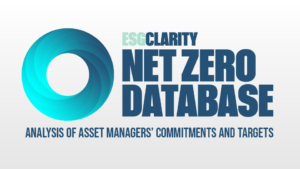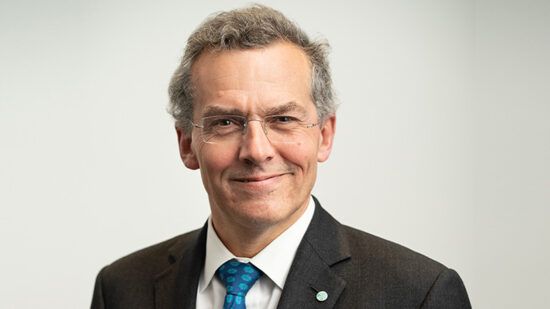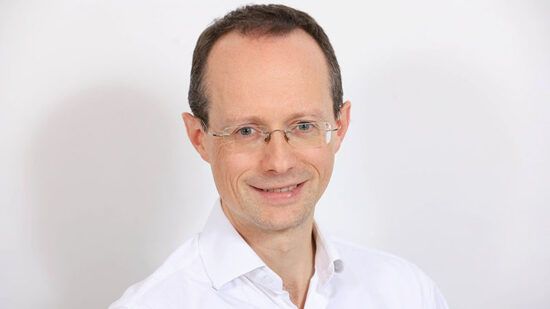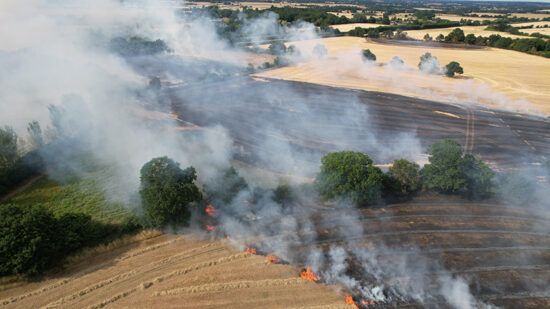We are very much at the beginning of the industry’s biodiversity journey, explains Virginie Derue, head of ESG research at AXA Investment Managers, and therefore different companies require different levels of engagement when approaching this topic.
In this Green Dream video interview, Derue discusses how AXA IM adjusts to a company’s maturity level when engaging, particularly on topics such as biodiversity and the just transition, and how the goal is to make companies rethink their business models all the time.
Watch the full video interview above and read the transcript below.
NK: Hello and welcome back to the Green Dream video series. Today I’m interviewing Virginie Derue, who is head of ESG research at AXA Investment Managers. Thank you very much for joining us today. And where are you dialling in from?
VD: From Paris.
NK: Fantastic. Well, thank you for your time. So let’s get to it. What are the key things that AXA is looking at from a sustainable investment perspective?
VD: There are three big things that AXA is looking at. And the first one is, of course, climate. So here the project is to assess the transition pathway of corporates. And it entails a mix of quantitative and qualitative analysis where expertise plays a key role. For instance, when we talk to a specific company that anticipates relying on carbon capture to achieve its long term emission reduction goals, we have to understand if it makes sense in that very sector because due to infrastructure requirements, at the end of the day, this technology is a relevant choice only in a very few and specific cases.
So to finish with climate and net zero ambition, I would just add that whatever the sector, we definitely prefer short term and concrete action to long term and inclusive goals. So this is for climate.
Our second theme is biodiversity. No surprise, it’s another systemic risk. Over the last two years, we have intensified our efforts from deforestation to other drivers of biodiversity loss, such as plastic or hazardous chemicals, for instance.
I guess that in the field of biodiversity, data and metrics are an issue. We also contribute to the enhancement of biodiversity-related tools through our partnership with Iceberg Data Lab. This partnership has really enabled us to dig into the matrix, digging into the methodologies to understand better what they rely on, their limitations, and most importantly, to understand the key pressures that companies across the board exert on biodiversity.
And finally, the third is social. We want to give it attention and scrutiny it deserves. We look at the usual topics such as health and safety, human capital, etc. but we also tackle new thematic such as human rights, in particular. This is really a topic which is gaining much traction, driven by different due diligence regulations coming into play.
And we think that it will become more and more impactful going forward for companies and also for investors.
NK: Okay, fantastic. It’s really good to hear that you’re looking at short term, concrete actions as we understand that companies can be quite vague and elusive, as you said, when it comes to this long term goals. And yes, some really good topics there.
Like you said, biodiversity has really come to the fore recently with the Taskforce for Nature related Disclosures releasing their final recommendations. How will you engaging with the companies that you invested on complying with that?
VD: First, it is a voluntary disclosure framework, so it’s not binding and corporates don’t have to comply with it. And second, as you know, it has just been released, so we are only at the beginning of their journey here on biodiversity. In fact, we don’t think that companies have to necessarily be early adopters. We have to adjust to their maturity when we engage with them. As you know, once again, biodiversity is definitely more complex than climate, primarily because there is no single cause for nature destruction. This is what science shows, there is no a single metrics unlike CO2 emissions, for instance.
Our approach is to leverage on the framework to have corporates better understand their interactions with nature and like what you have with CO2 emissions, better understand that the specific place where the economic activities take place, that’s what really matters as for the impact on biodiversity. What I’m trying to say is that there are different ways of engaging with companies, but like I said, we are only at the beginning of the journey.
It will be tough, it will be challenging, no doubt. But the goal is ultimately to make companies rethink their business models all the time. And all of this should really pave the way for nature preservation and restoration action.
NK: I completely appreciate that. It’s quite early on the biodiversity disclosure journey. Perhaps we’ll come back to you next year with that question. It will be interesting to see how it evolves across the industry. AXA IM is also part of the Nature Action 100 initiative. Do you think the collaborative initiatives like this can really accelerate the performance of companies in terms of the nature impact, or is it really setting a bar that no company can really push ahead of?
VD: AXA IM is a member of Nature Action 100 and was also part of the launching group simply because we are convinced that collective action and investors pressure are really efficient levers to drive change.
To me this has been largely demonstrated in the field of climate change and I think it’s all the more necessary here in the field of biodiversity, given that corporates are unfamiliar with the topic. So the point of Nature 100 is really to raise awareness, to share knowledge around the most important drivers of negative impact, capitalising on what biodiversity measurement tool.
So highlighting the risk and the dependencies both in companies own operations but also in the supply chains and equality promote measures that can be put in place to restore our nature going forwards.
NK: Yes, and that is absolutely vital. Well, tell us a bit more about you touched on social is one of the investment themes that you’re looking at. How are you pushing for a just transition within portfolios?
VD: We’ve just talked about biodiversity. The just transition is definitely even less mature than biodiversity and sciences have no help here unfortunately so our aim is really to encourage corporates to integrate first, this dimension into their strategies on three fronts; as an employer, as a provider of goods and services, and as stakeholders. Many local communities and especially public bodies, because of course governments also have their role to play here.
So concretely what do we do? We are actively engaged in a collaborative engagement initiative in the energy sector. We’ve seen some positive steps met around the closure of some production sites, for instance, but they remain very much bottom-up examples. What we really want to see now is a more coherent and articulated strategy from management. And finally, the way asset managers can influence this transition is through bond issuance and I think we have a role to play by enabling social bonds in that regard.
NK: Okay, fantastic. I mean, I feel that we’ve been talking about ESG and sustainable investing for years, but what you’ve highlighted is that we are still very at the early stages for lots of these things.
Well, thank you very much for sharing your insights. We always end the Green Dream with this question. What is your favourite sustainable drink or snack?
VD: I really enjoy smoked tofu because it’s tasty, because it’s a great alternative to meat consumption. And on a more personal note, it’s really important for me to get my children used to that.
NK: Fantastic. Well, thank you very much for sharing everything with us. Great to chat with you. VD: Thank you.








